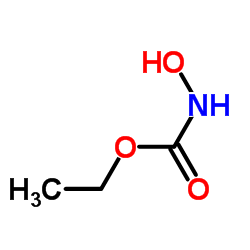Antiteratogenic effects of tumor inhibitors, caffeine, antipain, and retinoic acid in mice.
T Nomura, T Enomoto, K Shibata, T Kanzaki, H Tanaka, S Hata, S Kimura, T Kusafuka, K Sobue, S Miyamoto
Index: Cancer Res. 43(11) , 5156-62, (1983)
Full Text: HTML
Abstract
To learn the effects of tumor inhibitors on chemically induced malformations, caffeine, antipain, and 13-trans-retinoic acid were given to pregnant ICR/Jcl mice after a single dose of urethan, N-hydroxyurethan, N-methyl-N-nitrosourea, N-ethyl-N-nitrosourea, or 4-nitroquinoline 1-oxide, which induces about 50% of the malformed fetuses. When caffeine was given immediately after carcinogen treatment on Day 10, urethan- and N-ethyl-N-nitrosourea-induced malformations were significantly suppressed by caffeine posttreatment, while N-hydroxyurethan- and N-methyl-N-nitrosourea-induced malformations were not suppressed by caffeine. 4-Nitroquinoline 1-oxide-initiated teratogenesis was also suppressed, but not significantly so (p not equal to 0.07). The results were very similar to those of the effects of caffeine on tumors induced by these carcinogens. Malformations of genetic origin (cleft palates and cleft lips) in CL/Fr mice were also suppressed significantly by caffeine treatment on Days 8 to 11, although the level of inhibition was less than that in chemically induced malformations. A protease inhibitor (antipromotor), antipain, also suppressed urethan-induced malformations. The antiteratogenic effects of antipain were most effective when it was given during the period of 24 to 48 hr after urethan treatment, while those of caffeine were most effective when it was given immediately after urethan. The promoting process might be involved in chemically induced teratogenesis, as it was in carcinogenesis. A natural retinoid (13-trans-retinoic acid) also suppressed urethan-induced malformations. Thus, tumors and malformations induced by chemical carcinogens were suppressed by tumor inhibitors, suggesting the similarity of both processes in the subcellular level, in spite of their morphological differences.
Related Compounds
| Structure | Name/CAS No. | Molecular Formula | Articles |
|---|---|---|---|
 |
Ethyl hydroxycarbamate
CAS:589-41-3 |
C3H7NO3 |
|
Enhanced antibacterial effect of silver nanoparticles obtain...
2011-04-01 [J. Mater. Sci. Mater. Med. 22(4) , 789-96, (2011)] |
|
Induction of chromosome breaks in cultured normal human leuk...
1965-08-01 [Cancer Res. 25(7) , 980-5, (1965)] |
|
Timing of chemically induced neoplasia in mice revealed by t...
1980-04-01 [Cancer Res. 40(4) , 1332-40, (1980)] |
|
Comparative carcinogenicities and mutagenicities of vinyl ca...
1980-04-01 [Cancer Res. 40(4) , 1194-203, (1980)] |
|
DNA repair synthesis induced by N-hydroxyurea, acetohydroxam...
1985-05-01 [Mutat. Res. 145(3) , 201-7, (1985)] |